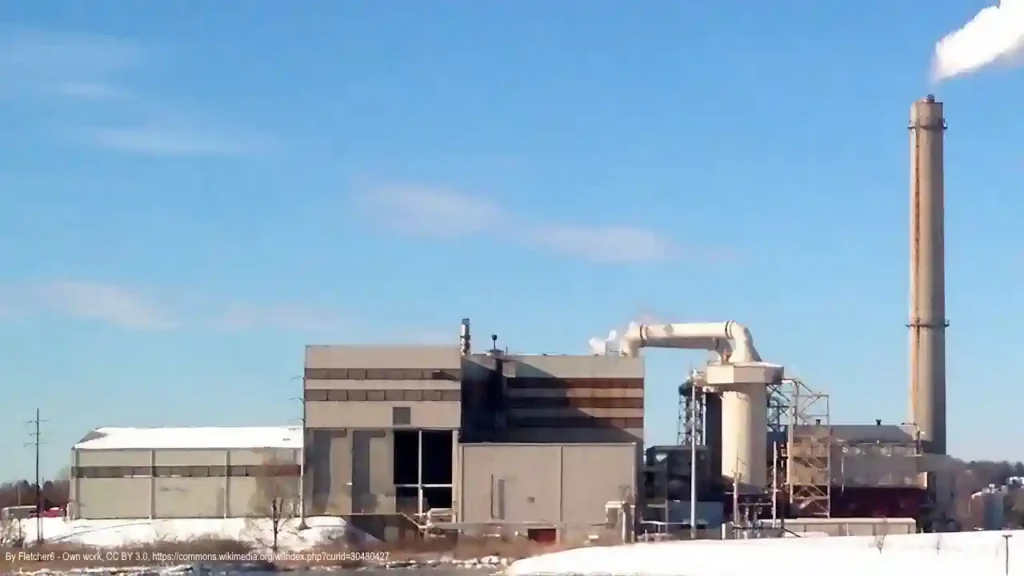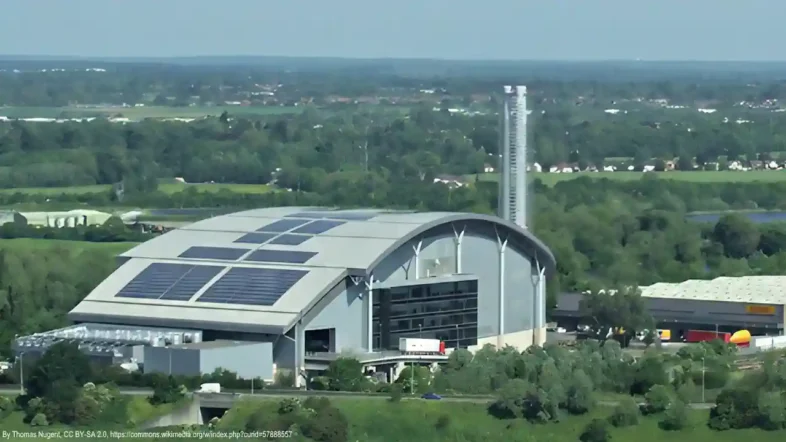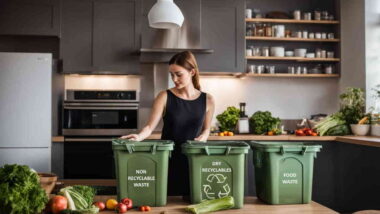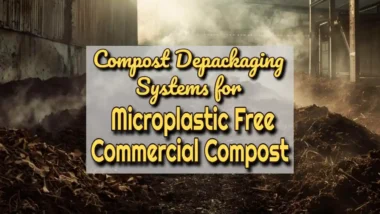Dealing with waste is a big problem for all communities. Every year, we produce billions of tonnes of waste worldwide. This article will guide you through the thermal treatment of waste, from incineration to pyrolysis, offering solutions to reduce this burden.
Stay informed and make a difference.
Key Takeaways
- Thermal treatment methods like incineration, pyrolysis, and gasification help reduce waste volume by turning it into energy or useful products.
- These technologies play a key role in managing solid and hazardous wastes while promoting recycling and reducing landfill use.
- Advanced systems from companies like AMUT and Weima offer innovative solutions for converting waste into renewable energy sources.
- Partnerships such as the one between Niersberger Group and Klean Industries focus on tyre pyrolysis to transform waste tyres into valuable resources.
- Thermal treatment provides environmental benefits by decreasing the amount of waste going to landfills and contributing to sustainable energy production.
Understanding Thermal Treatment of Waste

A waste-to-energy plant in Saugus, Massachusetts, the first modern incineration plant in the United States.
Thermal treatment of waste utilises methods like incineration, pyrolysis, gasification, plasma gasification, and waste drying. These methods offer advantages in reducing waste volume and generating renewable energy.
Definition and explanation
Thermal treatment of waste uses heat to reduce waste volume and turn it into energy. This process involves several methods, including incineration, gasification, pyrolysis, plasma gasification, and waste drying.
Each method plays a vital role in managing municipal solid waste by breaking down complex materials. Incineration burns waste at high temperatures with oxygen present, drastically reducing its size.
Pyrolysis operates without oxygen, thermally degrading the waste and producing useful products like syngas or pyrolysis oil for energy generation.
These technologies have revolutionised how we handle solid waste and hazardous materials by offering cleaner alternatives to landfill disposal. Innovations in thermal treatment support pollution control and promote recycling technology while addressing pressing environmental concerns such as air pollution from particulate matter and the release of dioxins.
By converting rubbish into renewable energy sources like synthetic gas or electricity, these methods not only tackle waste management challenges but also contribute significantly to energy recovery efforts worldwide.
Common methods: incineration, pyrolysis, gasification, plasma gasification, and waste drying
After exploring the basics of thermal treatment, let's delve into the common methods used in this process. These techniques play a crucial role in managing waste more efficiently and sustainably.
- Incineration involves burning waste materials at high temperatures. This method directly releases energy from the waste, which can then generate electricity or heat buildings. Incineration is popular for its ability to reduce waste volume significantly—up to 90%. However, it must be carefully controlled to minimise emissions of flue gases and particulates into the atmosphere.
- Pyrolysis operates under high temperatures but in the absence of oxygen. It transforms solid waste into liquid oil, gas, and char. Pyrolysis excels at processing mixed or contaminated wastes that are difficult to handle through other means. The process also produces valuable byproducts, such as biochar, which can be used in agriculture or as a fuel source.
- Gasification occurs at high temperatures with a controlled amount of oxygen or steam. This method converts organic or fossil fuel-based carbonaceous materials into carbon monoxide, hydrogen gas, and carbon dioxide. Gasification can process diverse types of waste and produce a syngas that can be used to generate electricity or as a basic chemical feedstock in industrial processes.
- Plasma gasification uses an ionised gas called plasma to decompose organic material into synthetic gas (syngas) and solid waste into slag (a glass-like product). The extremely high temperatures make this method efficient for treating hazardous wastes while destroying toxins and reducing the volume of waste considerably.
- Waste drying involves removing water from waste materials before they undergo further thermal treatment processes. Drying reduces the weight and volume of the waste, making it easier to handle and transport. It also increases the efficiency of subsequent thermal treatments by reducing moisture content that can interfere with combustion or gasification processes.
Advantages and disadvantages
Thermal treatment of waste harnesses high temperatures to reduce waste volume and generate energy. This method presents a range of technologies, each with its unique set of advantages and disadvantages. Presented in the table below, these pros and cons are essential considerations for waste management professionals as they evaluate the most suitable technologies for their specific needs.
| Method | Advantages | Disadvantages |
|---|---|---|
| Incineration |
|
|
| Pyrolysis |
|
|
| Gasification |
|
|
| Plasma Gasification |
|
|
| Waste Drying |
|
|
This table outlines the crucial aspects to consider when selecting a thermal waste treatment method. It is clear that while these technologies offer promising solutions for waste management, they also come with challenges that need careful consideration and management.
Innovative Thermal Waste Treatment Technologies

Explore cutting-edge thermal waste treatment technologies such as AMUT's recycling trio and Weima system solutions, revolutionising the industry with their advanced approaches.
Learn about Niersberger Group's partnership for tyre pyrolysis, alongside BHS-Sonthofen technology and Lindner’s fire prevention system, paving the way for sustainable waste management solutions.

MUT's recycling trio
AMUT has taken a giant leap in managing plastic waste with their recycling trio: Duet, Choir, and Symphony. These projects are making waves in Australia, transforming the challenge of circular plastics into an opportunity.
By harnessing advanced thermal treatment technologies like pyrolysis, they break down waste materials into gas, oil, and solid residues. This approach not only tackles the issue of plastic pollution but also showcases AMUT's dedication to sustainable practices.
Diving deeper into how these projects function reveals that each one serves a unique role within the wider scheme of recycling and sustainability. The Duet project focuses on converting mixed waste plastics into valuable resources, whereas Choir aims at handling more challenging types of plastic waste.
On the other hand, Symphony orchestrates the overall process to ensure efficiency and effectiveness in turning what was once considered waste into reusable energy sources. Through this innovative methodology, AMUT sets new industry standards for thermal treatment technologies.
Weima system solutions
Weima system solutions stand out in the field of thermal waste treatment technologies. Their advanced machinery is designed for efficient incineration and pyrolysis, turning a wide range of waste materials into value.
This includes everything from municipal waste to hazardous materials. The technology focuses on minimising landfill use and reducing greenhouse gas emissions. It's ideal for managing solid waste, medical waste, and even heavy metals.
Their systems are not just about dealing with waste. They also aim to generate renewable energy from the process. By converting trash into heat or electricity, Weima's solutions contribute significantly to sustainable development goals.
They tackle environmental issues head-on while providing practical benefits for waste management professionals.
Niersberger Group partnership for tyre pyrolysis
The Niersberger Group has taken a significant step forward with its strategic partnership with Klean Industries, focusing on tyre pyrolysis. This collaboration is set to introduce cutting-edge thermal waste treatment technologies.
Their main goal is transforming waste tyres into valuable products, aligning perfectly with the energy from waste policy and guidelines. Tyre pyrolysis plays a crucial role in this process, offering an innovative solution to manage and convert waste.
Their initiatives are not just about reducing landfill usage; they also aim at creating renewable energy sources from what was once considered mere waste. By converting discarded tyres through thermal decomposition, the partnership taps into a sustainable method of producing materials for various uses—showcasing their commitment to environmental stewardship and resource conservation.
BHS-Sonthofen technology
BHS-Sonthofen's innovative technology is changing the game in the recycling and waste management industry. Their solutions focus on enhancing filtration, drying, mixing, and especially recycling processes for efficient waste treatment.
This aligns perfectly with the EU's ambitious goal of recycling at least 50% of household waste by making strides in thermal waste treatment technologies.
Their HALOSEP process stands out as a pioneer in handling fly ash from incineration plants. By employing cutting-edge techniques, BHS-Sonthofen effectively manages hazardous waste and significantly reduces landfill dependency.
This method not only supports environmental sustainability but also propels the shift towards more eco-friendly energy sources by converting waste into valuable resources.
Lindner's fire prevention system
Lindner's fire prevention system enhances safety in thermal waste treatment. It mitigates the risk of fire outbreaks during the incineration or pyrolysis process. Waste management professionals benefit from its proactive approach to preventing potential hazards, ensuring smooth operations and safeguarding personnel and equipment.
Lindner's system integrates seamlessly into existing thermal treatment technologies, providing a reliable solution for industry-specific safety concerns associated with waste management processes.
Lindner's fire prevention system is an essential component in optimising the efficiency and reliability of thermal waste treatment technologies. Its proactive approach to addressing fire hazards during incineration or pyrolysis improves operational safety significantly, contributing to seamless waste processing for sustainable outcomes.
Environmental and Energy Benefits of Thermal Treatment
Thermal treatment reduces waste volume. It generates renewable energy and diverts waste from landfills.

Reducing waste volume
Thermal treatment processes such as incineration and pyrolysis can swiftly decrease the volume of waste, presenting an efficient solution for managing solid waste. These methods convert waste into ash, gases, and heat, significantly reducing its original volume and lessening the strain on landfill capacity.
By harnessing thermal treatment technologies like incineration and pyrolysis, waste management professionals can effectively tackle the challenge of high volumes of solid waste in a manner that minimises environmental impact while maximising space efficiency in landfills.
This presents an innovative approach to addressing the increasing volume of waste generated daily.
Generating renewable energy
After reducing waste volume, the next step is generating renewable energy. Thermal treatment processes like gasification and pyrolysis can convert waste into syngas or liquid fuels for energy production.
These technologies offer potential environmental and energy benefits by producing renewable energy sources while effectively managing waste. By harnessing the power of thermal treatment, waste management professionals can contribute to sustainable energy generation and reduce reliance on fossil fuels.
Using innovative thermal waste treatment technologies such as pyrolysis, gasification, and plasma gasification, it's possible to not only manage waste but also create valuable renewable energy resources.
Diverting waste from landfills
Thermal treatment technologies play a crucial role in diverting waste from landfills, reducing the environmental burden of waste disposal. Advanced Thermal Treatment (ATT) methods like incineration and pyrolysis provide sustainable alternatives to traditional landfilling, especially for Municipal Solid Waste (MSW).
By converting waste into energy or valuable resources such as metals, these technologies help minimise the volume of waste destined for landfills while also mitigating the associated environmental impacts.
Adopting these innovative solutions can significantly contribute to a more efficient and environmentally friendly approach to managing solid waste.
Innovative thermal treatment technologies are essential for diverting waste from landfills by transforming it into renewable energy sources or valuable resources like metals, thereby diminishing its impact on the environment.
These cutting-edge methods not only reduce reliance on traditional landfill disposal but also offer new avenues for sustainable waste management, aligning with global efforts towards environmental conservation and resource recovery.
Conclusion
In conclusion, the thermal treatment of waste offers a range of cutting-edge technologies and methods for managing and repurposing waste materials. From incineration to pyrolysis, these processes not only reduce waste volume but also contribute to generating renewable energy while diverting waste from landfills.
With innovative solutions like AMUT's recycling trio and Weima system offerings, the industry is constantly evolving to meet the ever-growing demand for sustainable waste management practices.
The environmental and energy benefits make it clear that thermal treatment presents a promising solution in tackling the challenges of solid waste disposal and resource recovery. It's an exciting time for waste management professionals as they explore new avenues towards a more efficient and eco-friendly approach to dealing with modern-day waste issues.
FAQs
1. What is thermal treatment of waste?
Thermal treatment of waste involves using high temperatures to reduce, sterilise, or completely eliminate waste materials. This process includes incineration, pyrolysis, and plasma arc gasification among others.
2. How does incineration work?
Incineration burns waste at high temperatures in a combustion chamber. This process reduces the volume of solid wastes like household rubbish and hazardous materials while producing energy.
3. Can thermal treatment methods handle all types of waste?
Yes, various thermal treatments such as rotary kiln incineration and pyrolysis can manage different kinds of waste including solid municipal trash, hazardous chemicals, and medical refuse.
4. Is thermal treatment safe for the environment?
When done correctly with pollution controlling technologies like scrubbers to clean emissions, thermal treatment significantly lowers the risk of releasing harmful pollutants into the environment.
5. What are the benefits of converting waste to energy through these processes?
Turning waste into energy helps decrease landfill use, cuts down methane emissions from decomposing trash, and generates electricity or heat that can be used in homes and businesses.
6. Can recycling work alongside these thermal processes?
Absolutely! Recycling separates useful materials like metals and glass before they reach incinerators or pyrolysis plants—maximising resource recovery and efficiency in managing municipal solid wastes.






